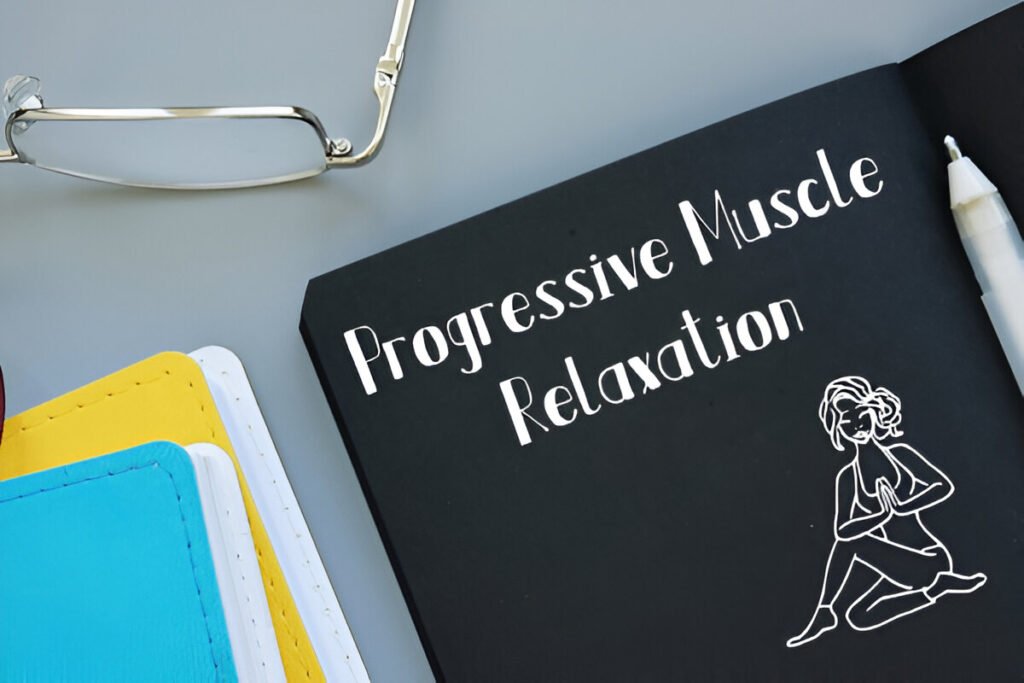Progressive Muscle Relaxation (PMR) is a therapeutic method created by Dr. Edmund Jacobson in the early 20th century. This technique involves the systematic tensing and relaxing of various muscle groups throughout the body, enabling individuals to heighten their awareness of physical sensations and recognize the differences between tension and relaxation. By focusing on these contrasts, practitioners can cultivate a greater sense of bodily awareness and relaxation.
In today’s fast-paced world, sleep disturbances are common, often intensified by stress and anxiety. PMR serves as an effective strategy for promoting sleep by alleviating muscle tension and fostering overall relaxation. By incorporating PMR into their nightly routine, individuals can create a calming environment that facilitates easier transitions into sleep and enhances overall sleep quality.
This article aims to provide a comprehensive understanding of PMR, including a step-by-step guide for effective practice and tips for integrating it into a regular sleep routine. By the end, readers will be equipped with the knowledge and tools necessary to utilize PMR for improved sleep, helping them achieve a more restful and restorative night.
Understanding Progressive Muscle Relaxation
Progressive Muscle Relaxation (PMR) is a technique designed to help individuals recognize and alleviate muscle tension throughout the body. It involves systematically tensing specific muscle groups for a few seconds and then relaxing them, which enhances awareness of physical sensations. Developed by Dr. Edmund Jacobson, PMR was rooted in research that demonstrated the physiological impacts of muscle tension and the effectiveness of relaxation techniques in reducing stress.
The benefits of PMR are multifaceted. Primarily, it helps reduce stress and anxiety by lowering physiological responses, such as cortisol levels, thus fostering a more balanced emotional state. Additionally, the deep relaxation achieved through PMR facilitates smoother transitions into deeper sleep stages, promoting restorative sleep cycles. Beyond preparing the body for sleep, PMR enhances overall relaxation, supporting well-being throughout the day by helping individuals manage daily stressors more effectively.

Preparing for PMR
To effectively practice Progressive Muscle Relaxation (PMR), it’s essential to create a comfortable environment that promotes relaxation. Start by choosing a quiet space free from distractions, such as noise and bright lights, to enhance your focus during the practice. A tranquil setting helps minimize interruptions, allowing you to concentrate on the sensations in your body. Additionally, adjusting the lighting to a softer level and ensuring a comfortable room temperature can further contribute to a cosy atmosphere, making it easier for you to relax fully.
Selecting the right time to practice PMR is also crucial for its effectiveness. While PMR can be performed at any time of day, incorporating it into your nightly routine is particularly beneficial for preparing your body for sleep. Establishing a consistent schedule for PMR helps signal to your body that it’s time to wind down, making it easier to integrate this practice into your overall sleep hygiene. By regularly practising PMR in the same time frame each evening, you cultivate a soothing ritual that promotes relaxation and enhances your ability to fall asleep peacefully.
Step-by-Step Guide to Progressive Muscle Relaxation
To begin practising Progressive Muscle Relaxation (PMR), it’s important to establish a comfortable starting position. You can choose to sit in a chair or lie on your back, ensuring that your body is well-supported to avoid any discomfort. Finding the right posture is crucial, as a relaxed position allows you to focus on the relaxation process without distractions. Taking a moment to adjust your body will set the foundation for an effective PMR session.
Next, do deep breathing exercises to improve your level of relaxation. Start by taking deep, slow breaths—inhale deeply through your nose, allowing your abdomen to expand fully, and then exhale slowly through your mouth. This technique calms the nervous system and prepares your body for the subsequent muscle tension and release. Establishing a steady breathing rhythm can further deepen your relaxation, helping you to transition smoothly into the muscle relaxation phase.
Once you’re in a comfortable position and have established a calming breathing pattern, you can begin tensing and relaxing different muscle groups throughout your body. Start with your head and neck by tensing the muscles in your forehead and jaw; hold this tension for about five seconds before releasing it and noticing the sensation of relaxation. Next, move to your shoulders and arms by raising your shoulders towards your ears while clenching your fists. After holding, drop your shoulders and open your hands. Continue this process with your chest and abdomen, tightening those muscles for five seconds before letting go, and finally, flex your feet and tense your calf muscles before allowing your legs to feel heavy.
To complete the PMR process, focus on full-body relaxation. Visualize a warm, soothing sensation starting from the top of your head and gradually flowing down to your toes. As you do this, pay attention to how your body feels against the surface beneath you, consciously letting go of any remaining tension. This mental imagery helps to reinforce the relaxation experience, allowing you to drift into a deeper state of calm. By following these steps, you can effectively utilize PMR to enhance relaxation and improve your overall sleep quality.
Tips for Effective Practice
To maximize the benefits of Progressive Muscle Relaxation (PMR), establishing a consistent practice schedule is essential. Aim to practice PMR at least three to four times a week. This regularity helps build familiarity with the technique, making it more effective over time. Each PMR session can last anywhere from 10 to 20 minutes, allowing you to customize the duration based on your personal preference and availability. Finding the right balance will enable you to incorporate PMR seamlessly into your routine.
While practising PMR, it’s common to face challenges, particularly with maintaining focus. It’s normal for the mind to wander, which can detract from the relaxation experience. If distractions arise, gently redirect your attention back to your breathing and the physical sensations you’re experiencing. This practice of mindfulness helps reinforce your concentration and keeps you engaged in the relaxation process.
To further enhance your focus during PMR, consider incorporating calming music or guided audio tracks into your sessions. These auditory tools can help create a soothing atmosphere, making it easier to immerse yourself in the relaxation experience. Guided tracks can provide structure to your practice, offering verbal cues that remind you when to tense and relax specific muscle groups. This combination of music and verbal guidance can significantly improve your ability to concentrate and deepen your relaxation.

Integrating PMR into a Sleep Routine
To effectively integrate Progressive Muscle Relaxation (PMR) into your sleep routine, consider combining it with other relaxation techniques that can enhance its benefits. Mindfulness meditation can be particularly effective when practised alongside PMR, as it fosters greater mental clarity and relaxation. Additionally, engaging in gentle stretching or yoga before your PMR session can help release physical tension, making the relaxation process more efficient and enjoyable. These complementary practices work together to prepare your body and mind for restful sleep.
Creating a consistent pre-sleep ritual that includes PMR is essential for signalling to your body that it’s time to unwind. Aim to practice PMR at the same time each night as part of your wind-down routine, which helps reinforce this calming habit. By establishing this regularity, you condition your body to recognize the cues that it’s time to rest, ultimately making it easier to transition into sleep. This structured approach enhances the effectiveness of PMR and contributes to improved sleep quality over time.
Conclusion
Progressive Muscle Relaxation (PMR) is a highly effective technique for reducing stress and anxiety while promoting relaxation and enhancing sleep quality. By systematically tensing and relaxing muscle groups, individuals can prepare their bodies for restorative sleep, making it easier to fall asleep and stay asleep throughout the night. The physiological benefits of PMR contribute to a more balanced emotional state, ultimately leading to a more restful experience.
If you find it difficult to unwind at the end of the day or struggle with sleep, consider incorporating PMR into your nightly routine. Its straightforward approach makes it accessible for anyone seeking to improve their sleep quality. With just a few minutes of practice, you can experience the calming effects of PMR and create a more conducive environment for sleep.
In today’s fast-paced and demanding world, prioritizing relaxation is essential for overall well-being. By practising PMR regularly, you not only enhance your sleep quality but also cultivate a deeper sense of calm throughout your daily life. Embracing this technique can lead to lasting improvements in your sleep patterns and your overall mental health, empowering you to face each day with renewed energy and focus.





